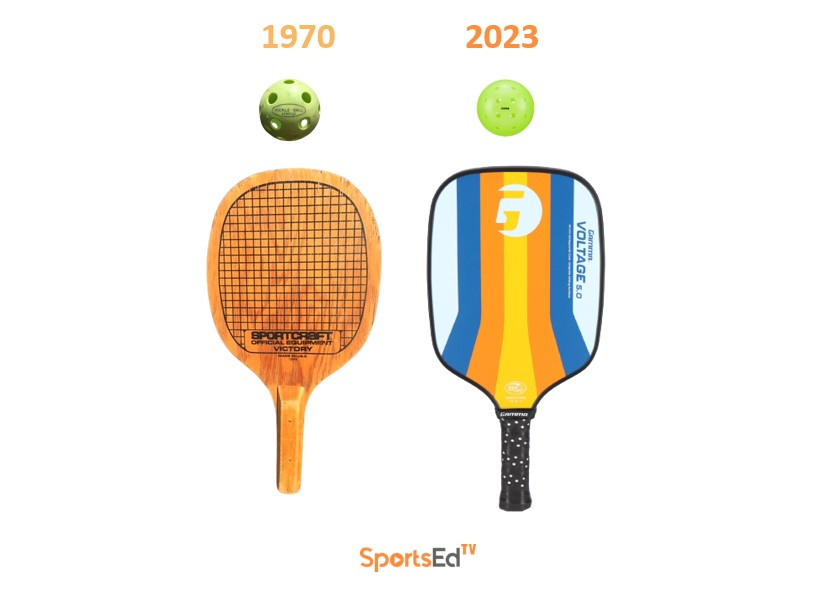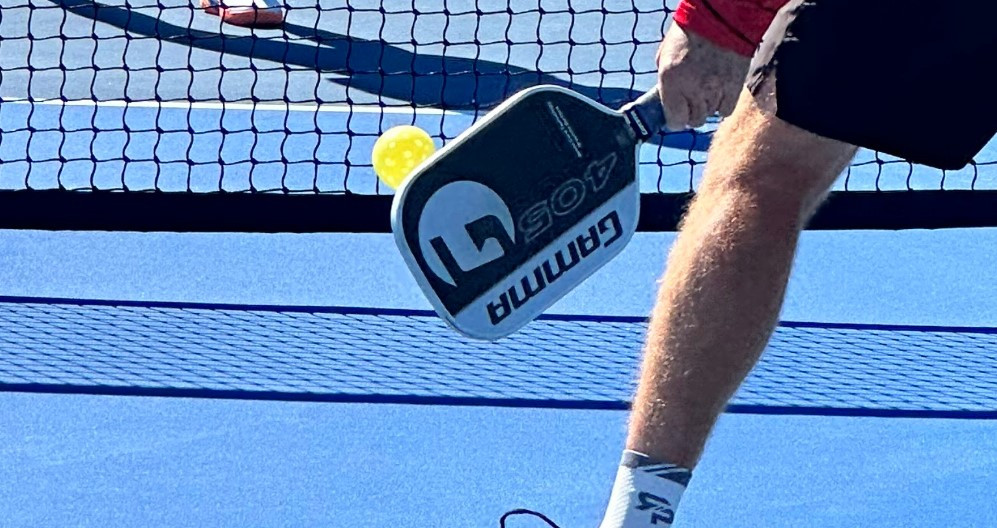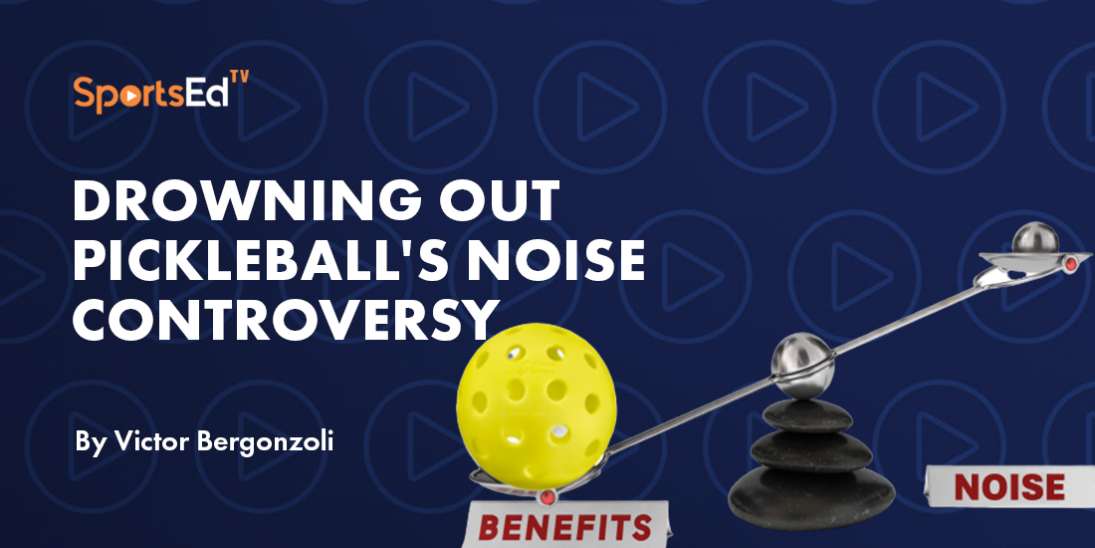Pickleball
Welcome and thanks for visiting...

How To Choose a Pickleball Paddle
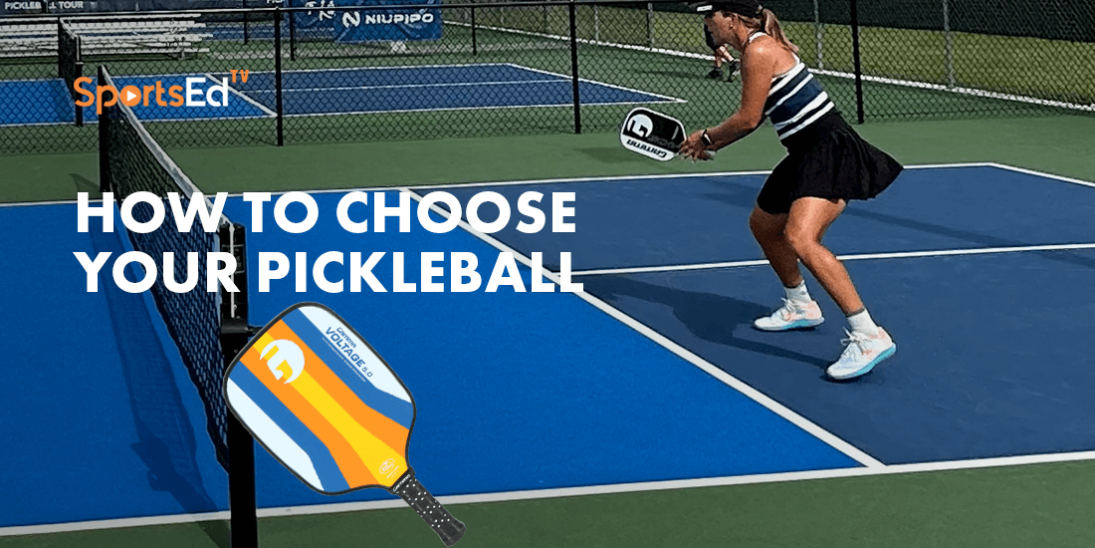
In pickleball one thing is sure: You need a paddle to play.
Pickleball’s sudden and important growth has attracted pickleball manufacturers as gold did at Sutter’s Mill.
There are over 250 pickleball paddle manufacturers.
Whether you're a pickleball newbie or a hard-nosed tournament player, there are many options in picking a pickleball paddle.
What do you need to know to be a smart pickleball paddle shopper?
Like any shopping trip, this one should set some parameters, especially as pricing goes. The dollar spectrum with pickleball paddles can tiptoe through the pricing gamut from affordable to gulp before you buy.
At the low end, a wooden paddle can be found for $25 to $35 and the pricing pyramid steps up when the material changes. Paddles made with composite materials range from $40 to $100 and graphite paddles top out at between $9 and $200. Souped-up models are going as high as $279.00
To get started without breaking the bank these may help.
Once the high-end sticker shock wears off, this next series of pickleball paddle selection questions might affect your choice.
What Are The Best Pickleball Paddles?
When it comes to choosing the best pickleball paddle, there is no one-size-fits-all answer. The ideal paddle for you will depend on several factors, including your skill level, play style, and personal preferences. However, there are a few key features to consider when selecting a paddle, such as weight, grip size, and material. Lightweight paddles are generally preferred by players who prioritize maneuverability, while heavier paddles can provide more power and stability. The grip size should be comfortable for your hand size to prevent slips and maximize control. Materials such as graphite, composite, and wood offer different benefits and trade-offs in terms of durability, power, and touch. Ultimately, the best way to find the right paddle is to test different models and brands and see what feels most comfortable and effective for your game. Your best pickleball paddle will reflect you, yet always include these principle factors. Given the amazing variety of choices, we endorse the organizations with staying power and high acceptability by pickleball players.
Pickleball Paddle Weight
Pickleball paddles come in different weights, ranging from 7 to 8.5 ounces. Typically, paddles weighing between 7 and 7.6 ounces are considered lightweight, 7.6 to 8.2 ounces are midweight, and those weighing over 8.2 ounces are heavyweight. However, these classifications can vary slightly depending on the brand.
The weight of a paddle can impact its performance on the court. Lightweight paddles are easy to maneuver, making them an advantage at the net when fast exchanges with opponents are involved. However, a lighter paddle requires more power in the swing to produce power. On the other hand, heavier paddles require less swing power due to their weight, which can be helpful during dinking. Heavy paddles also tend to be more stable at impact, reducing the chances of the paddle wobbling and increasing consistency.
If you have a lighter paddle and prefer a heavier one, adding lead tape to the edge guard is a common practice to add weight to the paddle.
Pickleball Paddle Material
The facing material or surface of a pickleball paddle is a crucial factor that impacts power, control, and the size of the sweet spot. Paddle manufacturers primarily use three materials for the paddle face: fiberglass, carbon fiber, and graphite. Let's take a closer look at each material.
- Fiberglass (Composite)
Fiberglass used to be the most common material for paddle facing, but it has become less popular as carbon fiber and graphite have gained popularity. However, fiberglass still offers the most power among the three materials.
Compared to carbon fiber and graphite, fiberglass is less stiff, which means it acts like a trampoline, transferring the energy of the ball back to the paddle. But this flexibility also reduces the size of the sweet spot.
- Carbon Fiber
Carbon fiber offers a better feel than fiberglass, but less power. It is an extremely stiff and durable material that spreads the energy of the ball throughout the paddle face and handle, resulting in a better feel and a larger sweet spot. However, less energy is transferred back to the ball, which reduces power.
- Graphite
Graphite is a type of carbon fiber that is slightly more cost-effective for manufacturers but offers similar performance to a carbon fiber face. Graphite also provides a better feel than a fiberglass face and generates a similar amount of power as carbon fiber. In fact, it can be difficult to distinguish between a graphite and carbon fiber face during play.
- Hybrids
Some paddle brands combine the three materials to produce a hybrid face that balances the strengths of each material.
How Facing Material Affects Paddle Performance
Spin is an essential aspect of pickleball, and paddle grit plays a role in generating spin. There are two main types of grit used on paddles: spray-on or painted grit, which has a sandpaper-like feel and tends to wear out quickly, and built-in grit, which is often called raw carbon fiber and lasts longer while producing more spin.
While the paddle core has a greater impact on paddle performance, the facing material also plays a role. The ideal facing material for you depends on your playing style and preferences.
If you want a power paddle, a thinner poly core with a fiberglass face can be a good option. The fiberglass provides more power, while the thinner core reduces control.
For more control, a thicker poly core with a carbon fiber or graphite face is better. The stiffer materials transfer less energy back to the ball, providing more control.
For a mix of power and control, a thicker core with a fiberglass face is a good choice. The thicker core provides control, while the fiberglass adds power for putting away balls.
Pickleball Paddle Shapes
In pickleball, the shape of your paddle can greatly impact your game, affecting your ability to hit powerful shots, spin the ball, and move around the court with ease. While the rules dictate that the paddle length cannot exceed 17 inches and the total length and width, including any edge guard and butt cap, cannot exceed 24 inches, manufacturers still have some flexibility when it comes to paddle shape.
Let's take a look at the three main paddle shapes and their impact on your game:
-
Elongated Shapes This paddle shape is longer and narrower, typically measuring around 16.5 inches long and 7.5 inches wide. The elongated shape provides players with extended reach, power, and spin, but it comes at the expense of maneuverability and a smaller sweet spot.
-
Widebody Shapes As the name suggests, these paddles have a wider face, usually around 8.5 inches, and a shorter length of about 15.5 inches. This design provides players with the largest sweet spot and high maneuverability, but players sacrifice reach and power compared to other shapes.
-
Classic Shapes This was the original paddle shape and is still commonly used today. It measures around 16 inches long and 8 inches wide, providing players with a balanced mix of power, spin, forgiveness, and maneuverability. The classic shape sits between the elongated and widebody shapes, making it a popular choice among players of all levels.
What size grip is best for pickleball?
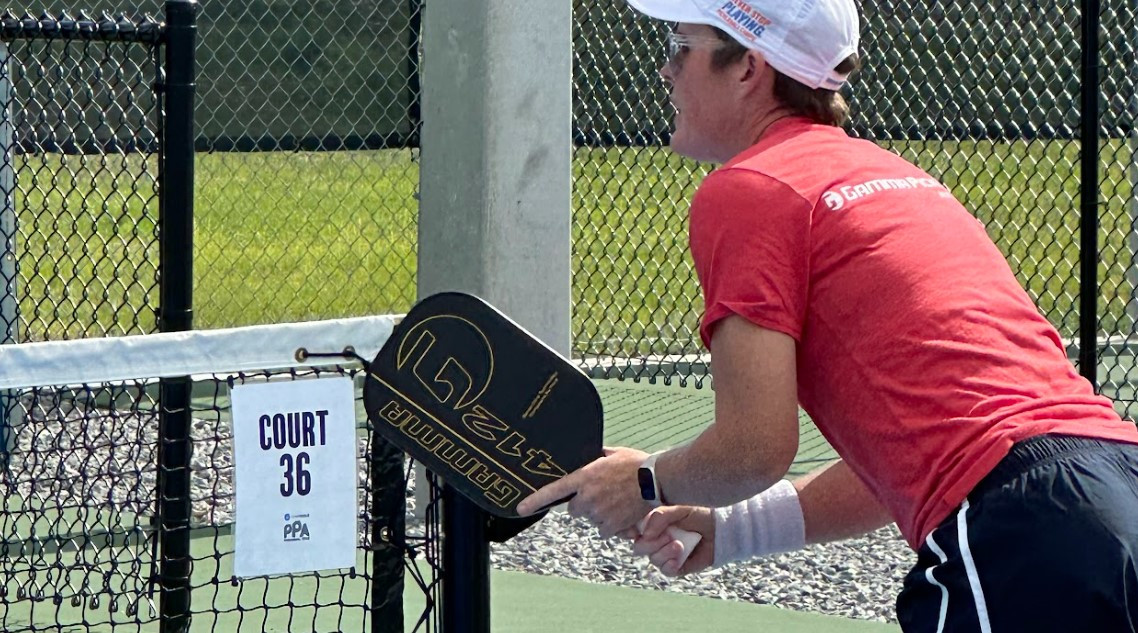
How the paddle’s handle fits in your hand is likely the most important fitting element you can make in your selection process. After all, your hand is the only connection your body has between the paddle and the game itself.
A paddle with a larger or thicker handle offers stability and will reduce pressure on your arm as compared to smaller-handled paddles.
Smaller handles offer more control over shots and allow the spin to be applied more easily than with a large-handled paddle. Small-handled paddles are easier to switch hands while playing.
To ease your selection decision, remember when you buy a smaller handled paddle there are solutions to temporarily building up the handles, such as over grips and taping. Downsizing a large handle is nearly impossible.
Handle sizing can begin by using the ruler test. Simply open your hand, extend your fingers, and align a ruler parallel with your ring finger with the base or end of the ruler in line with the palm’s middle crease.
Most hands will find the length between the tip of the ring finger to the middle crease will fall between 4 and 5 inches. Your precise measurement determines your handle size.
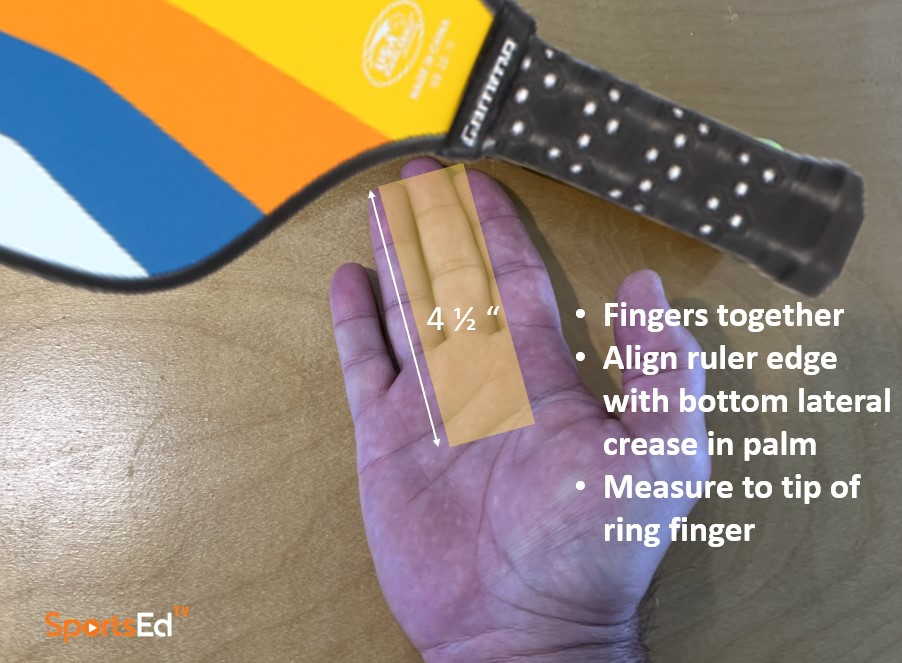
Another way to find the handle size that will work best for you is the index finger test. Here's how to do it. With your dominant hand grasp the handle so the knuckle of your index finger and the heel pad of your playing hand rests on the same bevel that matches the face of the paddle.
Now, with the index finger of your free hand, slide it between the gap between the handle and the tip of your ring finger grasping the handle. The space there determines your choice.
Too much space or too little indicates whether the paddle handle is too large or small for you. A snug fit indicates your correct paddle handle size.
After fitting yourself, remember it is always easier to adjust a smaller grip to your changing handle issues, by adding an overgrip to the handle. Again, it is difficult to reduce the size of the handle and a larger handle can be the culprit for arm fatigue.
Best Pickleball Paddles for Beginner Players
Your first paddle might be made of composite materials, but as your passion for pickleball gets ignited you're apt to progress to the intermediate level quite quickly and want to upgrade to stronger paddles.
To review for beginners, a composite material with a wider hitting surface and a thicker handle, in the beginning, will help with the wear and tear on your arm that may not be in pickleball shape right away. As for color, have fun, pickleball is.
Best Pickleball Paddles for Intermediate Players
By now you’ve likely graduated from the fun and social part of pickleball that will always stay, but the athlete in you has begun to enjoy the competition and you want equipment to mirror your improvement. It’s time to stack the thick handle and graduate from a wide-hitting surface to a longer one. As for the handle, a small one can be a drastic change from your thick one, so you can tape it for purchase and sizing until you become comfortable.
Get your pickleball game on
So now we hope we've armed you with the information that will help you answer the question what are the best pickleball paddles as a key to your enjoyment? The answer of course will be the one that fits you and your pickleball game. Finally, to take the edge off, we have one un-asked pickleball question. How many times can you repeat:
Peter Piper Picked a Pair of Perfect Pickleball Paddles


